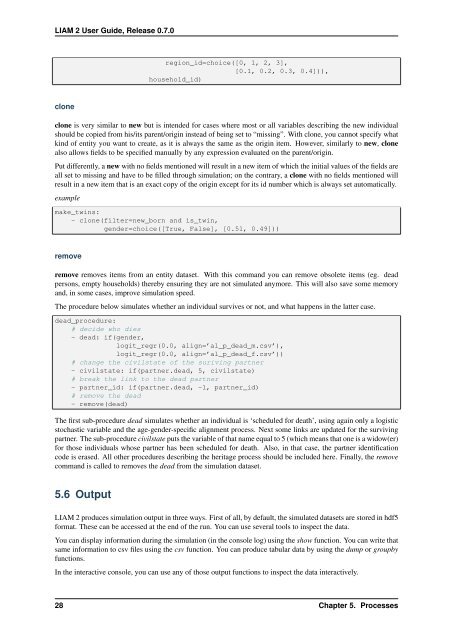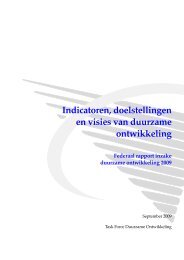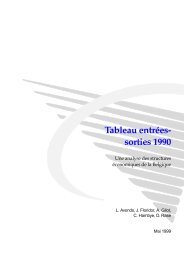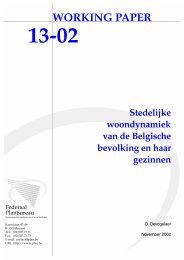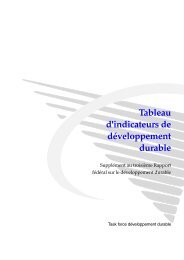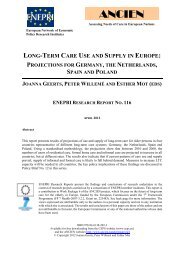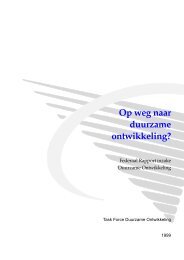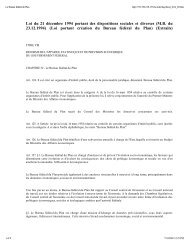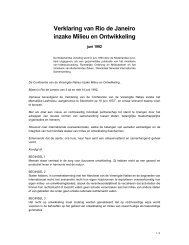LIAM 2 User Guide
LIAM 2 User Guide
LIAM 2 User Guide
You also want an ePaper? Increase the reach of your titles
YUMPU automatically turns print PDFs into web optimized ePapers that Google loves.
<strong>LIAM</strong> 2 <strong>User</strong> <strong>Guide</strong>, Release 0.7.0region_id=choice([0, 1, 2, 3],[0.1, 0.2, 0.3, 0.4])),household_id)cloneclone is very similar to new but is intended for cases where most or all variables describing the new individualshould be copied from his/its parent/origin instead of being set to “missing”. With clone, you cannot specify whatkind of entity you want to create, as it is always the same as the origin item. However, similarly to new, clonealso allows fields to be specified manually by any expression evaluated on the parent/origin.Put differently, a new with no fields mentioned will result in a new item of which the initial values of the fields areall set to missing and have to be filled through simulation; on the contrary, a clone with no fields mentioned willresult in a new item that is an exact copy of the origin except for its id number which is always set automatically.examplemake_twins:- clone(filter=new_born and is_twin,gender=choice([True, False], [0.51, 0.49]))removeremove removes items from an entity dataset. With this command you can remove obsolete items (eg. deadpersons, empty households) thereby ensuring they are not simulated anymore. This will also save some memoryand, in some cases, improve simulation speed.The procedure below simulates whether an individual survives or not, and what happens in the latter case.dead_procedure:# decide who dies- dead: if(gender,logit_regr(0.0, align=’al_p_dead_m.csv’),logit_regr(0.0, align=’al_p_dead_f.csv’))# change the civilstate of the suriving partner- civilstate: if(partner.dead, 5, civilstate)# break the link to the dead partner- partner_id: if(partner.dead, -1, partner_id)# remove the dead- remove(dead)The first sub-procedure dead simulates whether an individual is ‘scheduled for death’, using again only a logisticstochastic variable and the age-gender-specific alignment process. Next some links are updated for the survivingpartner. The sub-procedure civilstate puts the variable of that name equal to 5 (which means that one is a widow(er)for those individuals whose partner has been scheduled for death. Also, in that case, the partner identificationcode is erased. All other procedures describing the heritage process should be included here. Finally, the removecommand is called to removes the dead from the simulation dataset.5.6 Output<strong>LIAM</strong> 2 produces simulation output in three ways. First of all, by default, the simulated datasets are stored in hdf5format. These can be accessed at the end of the run. You can use several tools to inspect the data.You can display information during the simulation (in the console log) using the show function. You can write thatsame information to csv files using the csv function. You can produce tabular data by using the dump or groupbyfunctions.In the interactive console, you can use any of those output functions to inspect the data interactively.28 Chapter 5. Processes


